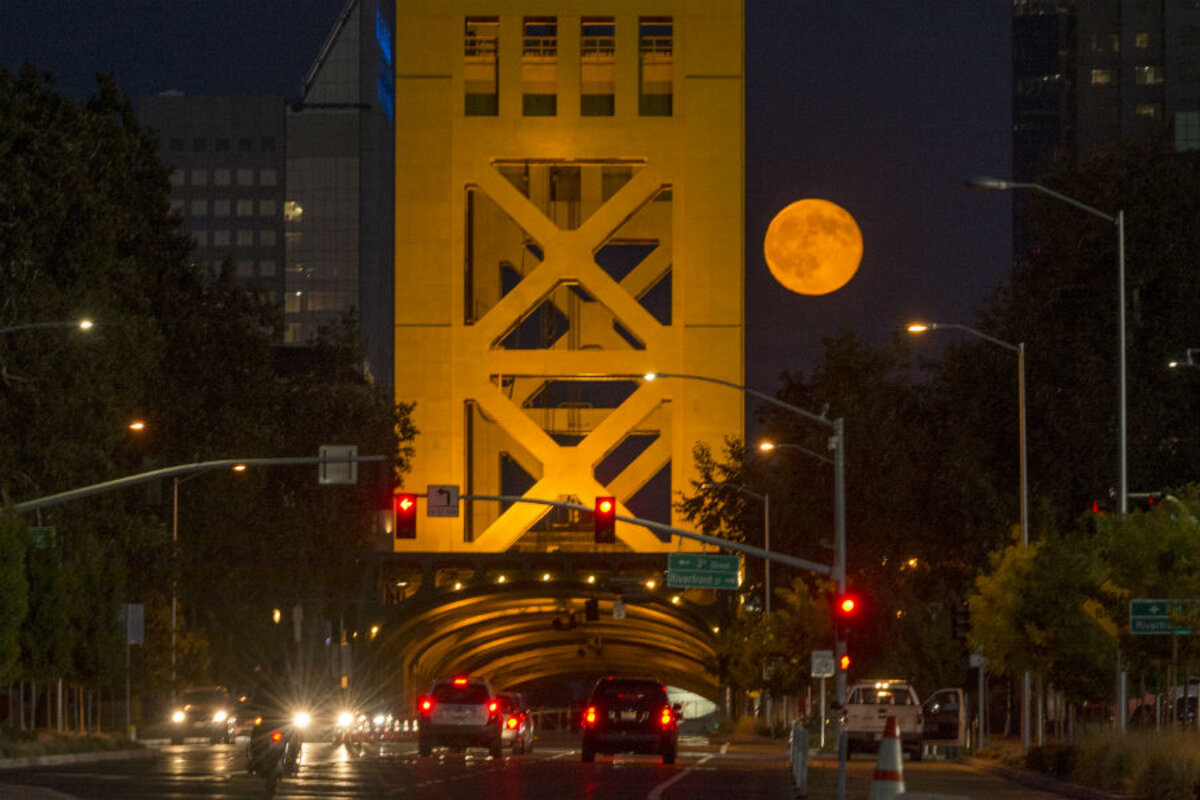Neon on the moon: Does it glow?
Loading...
What do Las Vegas and the moon have in common?
The answer, according to NASA, is an abundance of neon.
"The presence of neon in the exosphere of the moon has been a subject of speculation since the Apollo missions, but no credible detections were made," said Mehdi Benna of NASA's Goddard Space Flight Center in Greenbelt, Maryland in a . "We were very pleased to not only finally confirm its presence, but to show that it is relatively abundant."
Dr. Benna is lead author of a that describes the observations gleaned by LADEE – pronounced "laddie" – a robot that orbited the moon for about seven months, gathering measurements of the structure and composition of the lunar atmosphere.
The moon offers clues to other bodies in the solar system, such as large asteroids, Mercury, and the moons of outer planets.
The instrument, which is short for Lunar Atmosphere and Dust Environment Explorer, confirmed that the moon’s exosphere is made up of mostly helium, argon, and neon. Their relative abundance is dependent on the time of day on the moon – argon peaks at sunrise, while neon peaks at 4 a.m. and helium at 1 a.m, according to NASA.
While most of the thin lunar exosphere comes from wind generated from the sun, LADEE found that some gas in the exosphere comes from lunar rocks. Argon-40 comes from the decay of naturally occurring radioactive potassium-40, found in the rocks of all the terrestrial planets as a leftover from their formation, according to NASA.
LADEE also revealed that the helium in the lunar exosphere comes from an unexpected place: "About 20 percent of the helium is coming from the moon itself, most likely as the result from the decay of radioactive thorium and uranium, also found in lunar rocks," said Benna.
The moon's atmosphere is technically referred to as an exosphere because it’s so thin, its atoms rarely collide. Due to the thinness of the moon’s exosphere – about 100 trillion times less dense than Earth's atmosphere at sea level – the neon does not glow.
Though not showy, surface boundary exospheres are "the most common class of atmosphere in our solar system," said Sarah Noble, LADEE's program scientist, "yet it is one we don't know much about."
Benna agrees that it is "critical to learn about the lunar exosphere before sustained human exploration substantially alters it," he said. The exosphere is so thin, he explains, "Rocket exhaust and outgassing from spacecraft could easily change its composition."
In addition to clearing up some lingering mysteries about Earth’s moon, the LADEE instrument signified a step toward modernizing production for NASA. The spacecraft's body "innovated away" from custom designs and transitioned the space agency to assembly-line production, which could drastically reduce the cost of spacecraft development, "just as the Ford Model T did for automobiles," say NASA officials.
LADEE met a swift demise in April 2014 when, its primary research mission concluded, NASA allowed the instrument to fly closer and closer to the lunar surface, gathering unprecedented exosphere measurements before ultimately crashing into the moon just days before it would have run out of fuel. But the contributions to science LADEE provided will endure.
"The data collected by [LADEE] addresses the long-standing questions related to the sources and sinks of exospheric helium and argon that have remained unanswered for four decades," said Benna. "These discoveries highlight the limitations of current exospheric models, and the need for more sophisticated ones in the future."





